New edition of the popular free textbook of electronics, computer architecture and low-level programming
Lord Imagination Technologies has just published a revised edition of a free textbook in Russian, "Digital circuit design and computer architecture" by David Harris and Sarah Harris (by the way, they are not spouses and not relatives at all - it just happened). The previous edition of this textbook was published a year ago, a post about it gathered 145,000 views on Habré , the downloads from the British site caused his British administrators suspicion that they were attacked by Russian hackers, and later the team of translators personally thanked the MIPT teachers for them, MVTU im. Bauman, Kharkov KNURE and other universities.

The book contains an “introduction to everything” available to a capable schoolchild or junior student who, after reading it, can design, write to SystemVerilog or VHDL and implement an uncomplicated but perfectly true conveyor processor on the FPGA. The book is written in a living language and uses concepts like the introduction of concepts such as finite automata:
')

Unfortunately, just like a year ago, the download of a book from imgtec.com was made by Krivoruk. You need to register twice - first as members of the Imagination Community, and then as members of the Imagination University Program. Fortunately, this year, double registration can be done on the same page - all you have to do is to answer “Yes” to the question “Do you also want to register for the Imagination University Program?” At the end - and fill in another opened sheet . In addition, after confirming the registration, you need to return (for example, by pressing "back and back" in the browser) to the page from which the file itself is downloaded. I think that after the closer integration of Europe with the countries of the Russian language, the quality of British websites will improve due to increased competition among web developers. But for now, alas, you will have to be patient and download a textbook like this:

Here is the link: http://community.imgtec.com/downloads/digital-design-and-computer-architecture-russian-edition-second-edition
It leads to this:
http://community.imgtec.com/register
After that, at the end there will be an unnoticeable question:
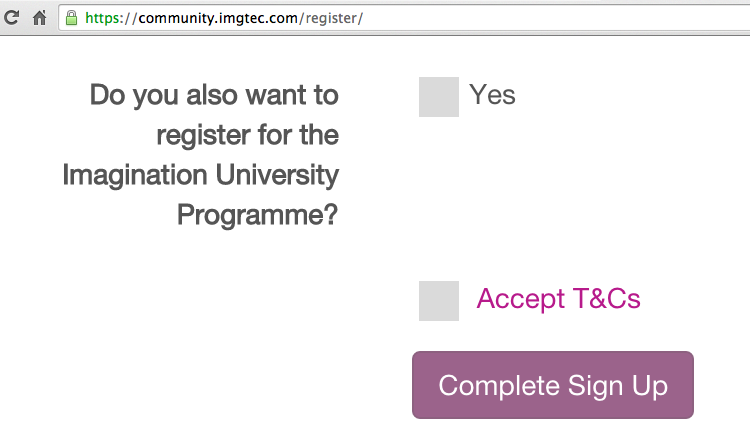
And when you click on the box, this form will open down:
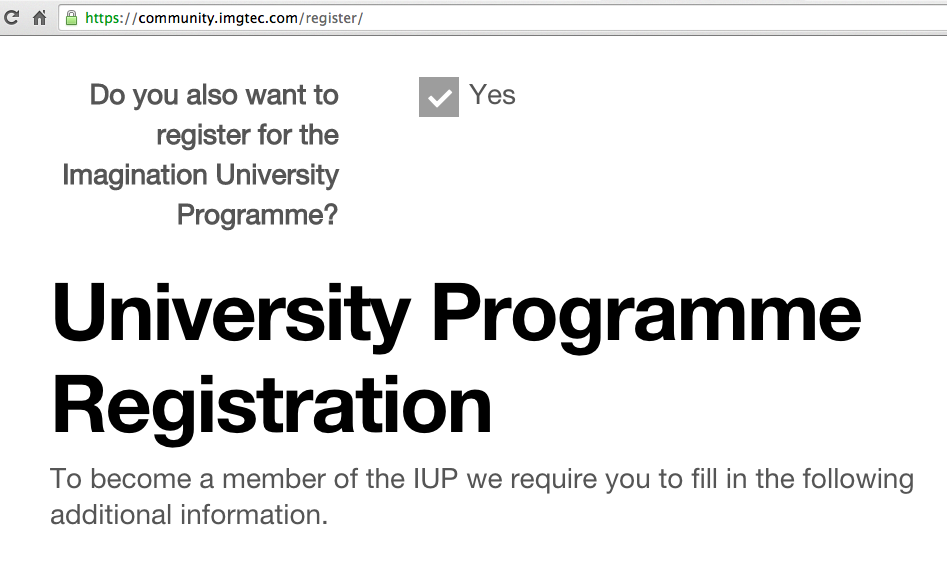
If you forgot to click on the box, here is an alternative registration sequence:
1) register with the community community.imgtec.com/register
2) confirm email
3) login to the community
4) go to the imagination university program - community.imgtec.com/university/university-registration
5) go to the menu University | Join iup
6) fill in
7) go to community.imgtec.com/downloads/digital-design-and-computer-architecture-russian-edition-second-edition and finally download
Now about the content. I posted in this post slides about the content of the Harris-Harris textbook from the initial post a year ago, as well as the final schedule of seminars in Almaty from August 22-26 , which are largely based on the materials of this textbook. Colleagues from the educational community of Kazakhstan decided to improve the level of students' training in technologies related to the Internet of things, computer architecture, programming of embedded systems, the use of FPGAs and microcontrollers. The presentation of Harris & Harris, MIPSfpga materials and the Connected MCU course fit well into this agenda.
After Kazakhstan, my colleagues and I are planning seminars in Russia and Ukraine, both on the topics already mentioned (MIPSfpga, Connected MCU), and on the new Nanometer ASIC seminars on semiconductor manufacturing.
Slides about the content of the textbook from the initial post:
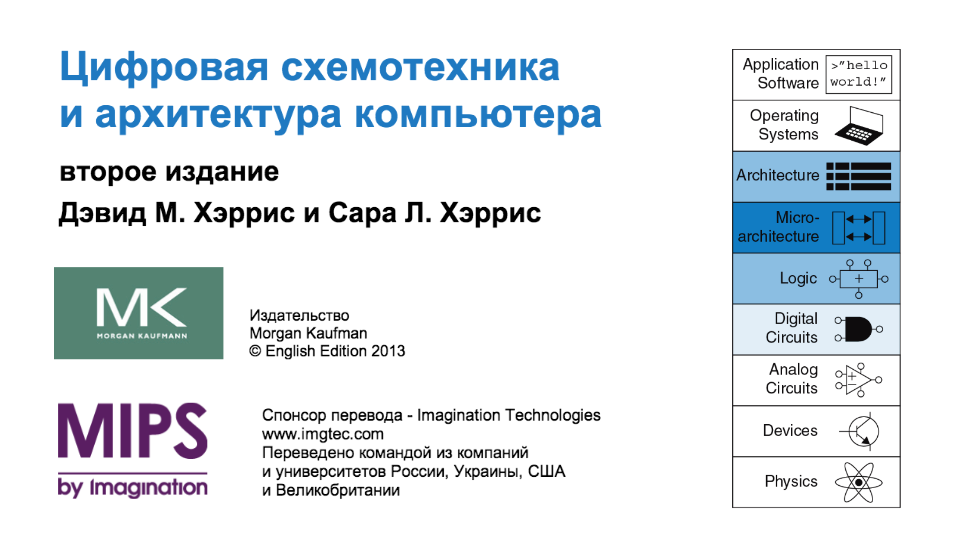
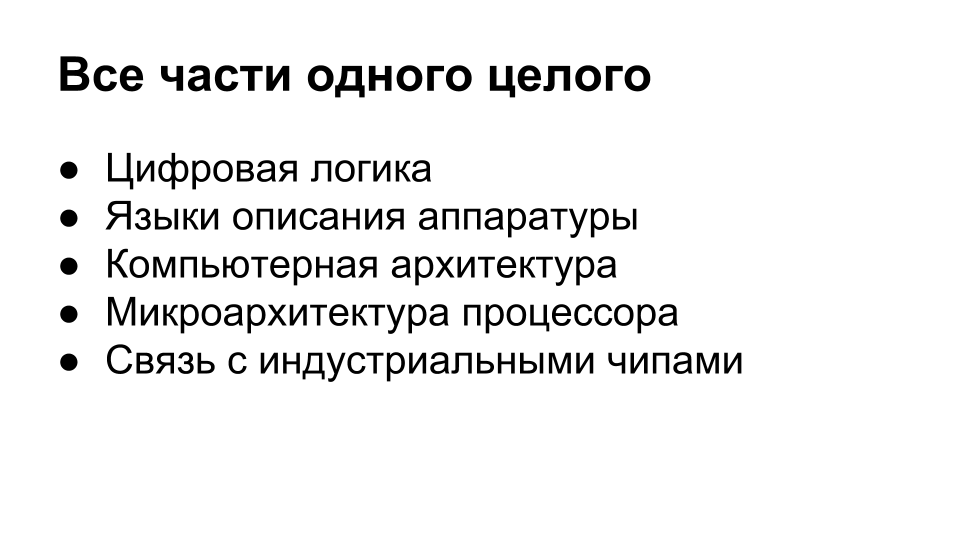

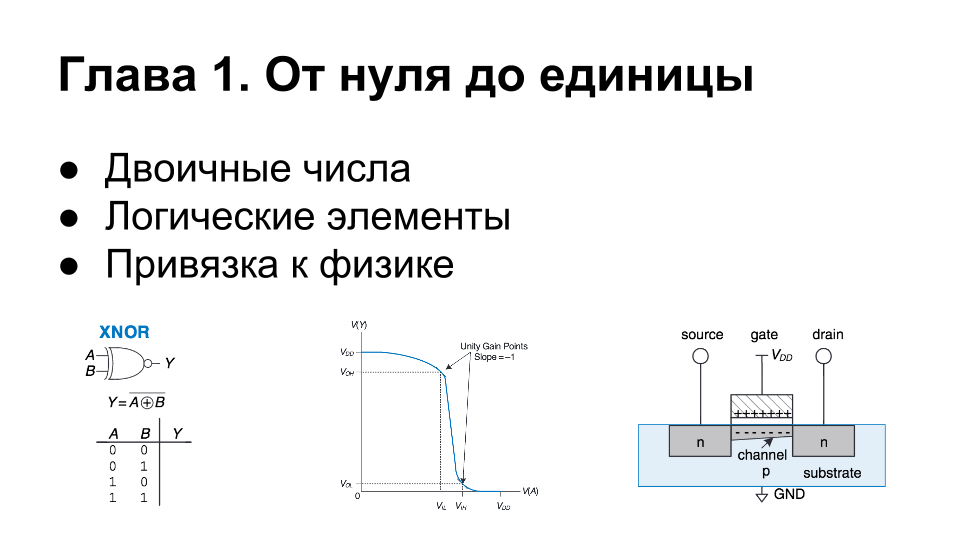
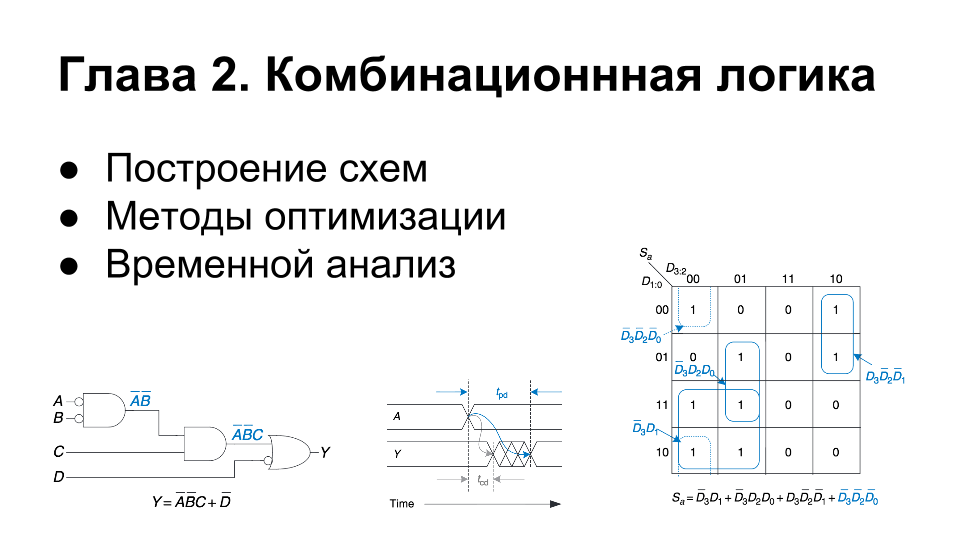
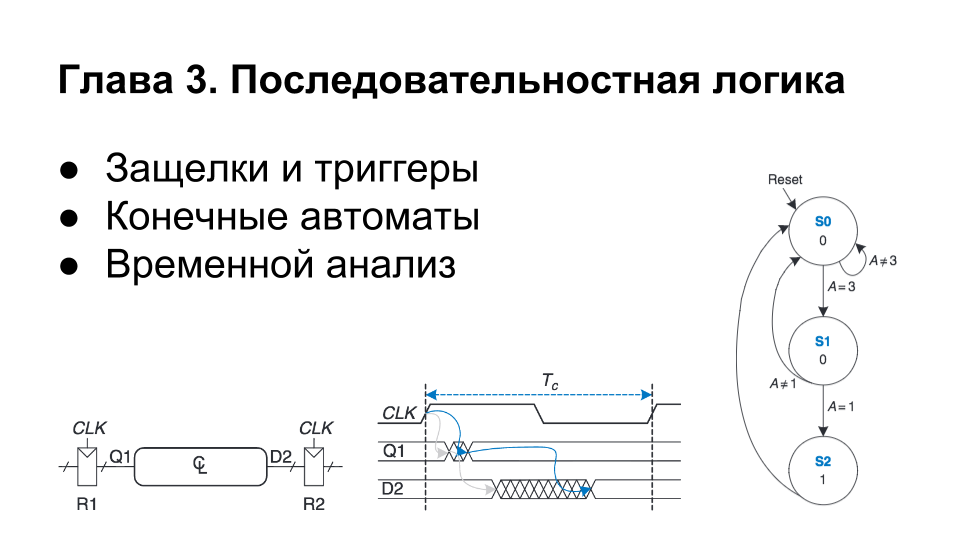

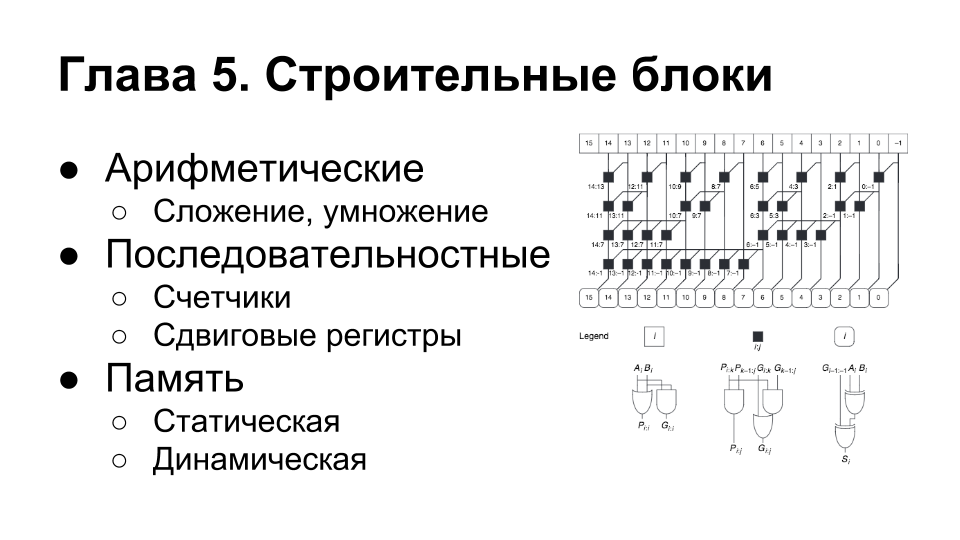

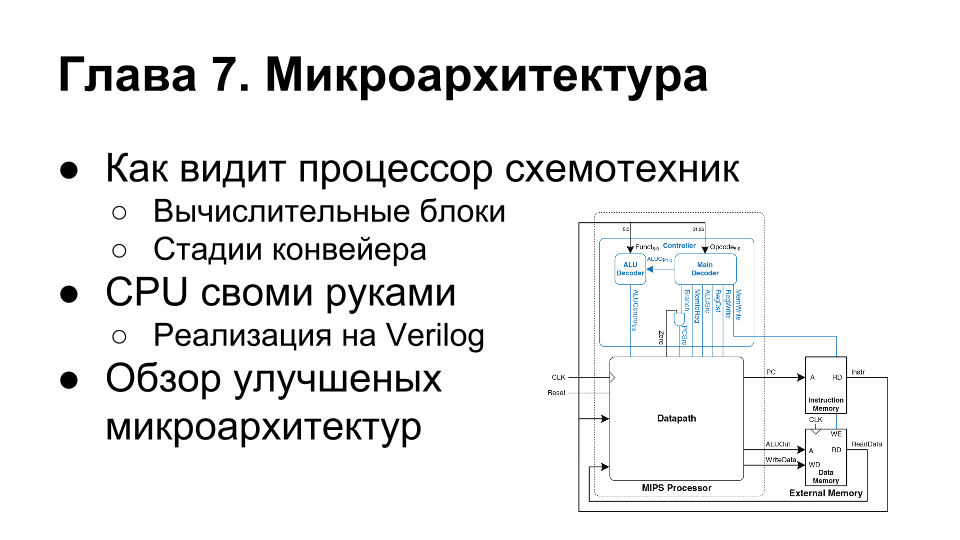
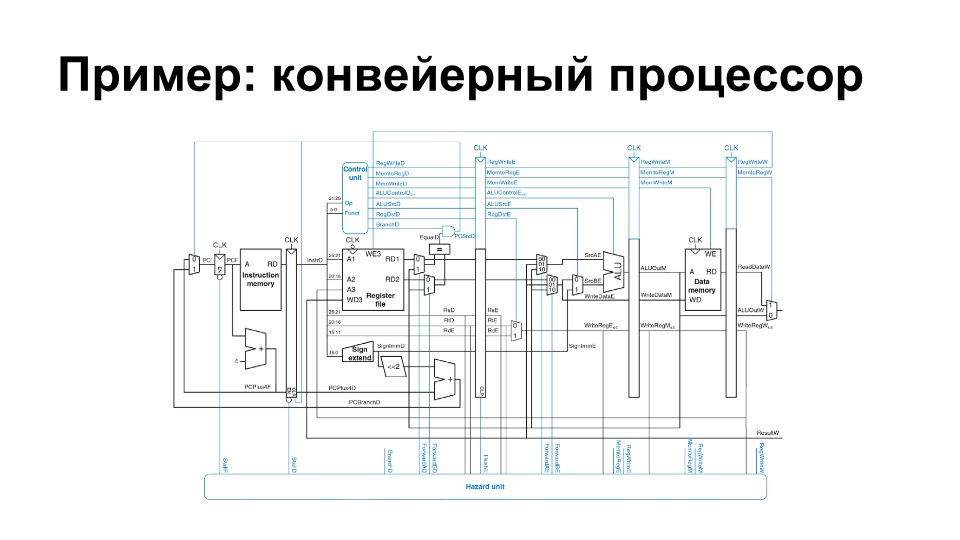
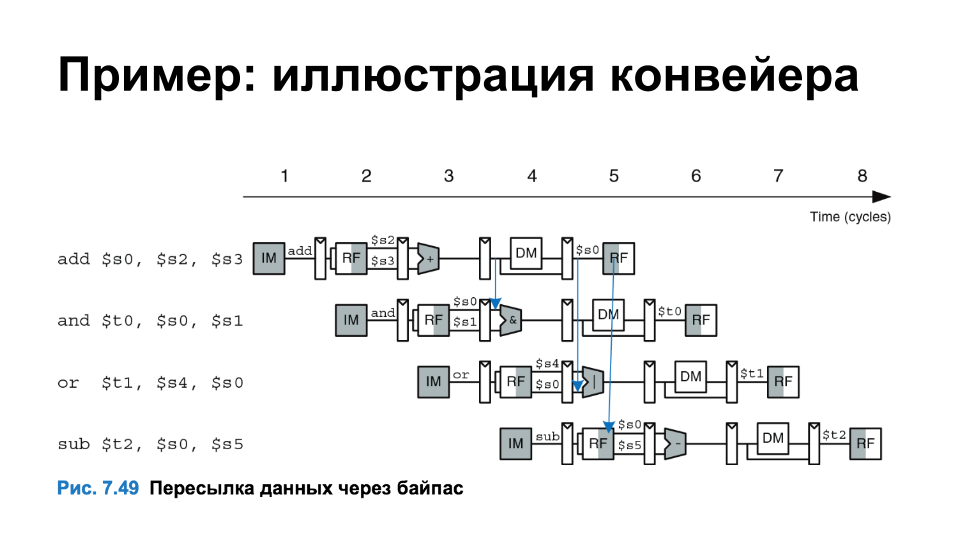

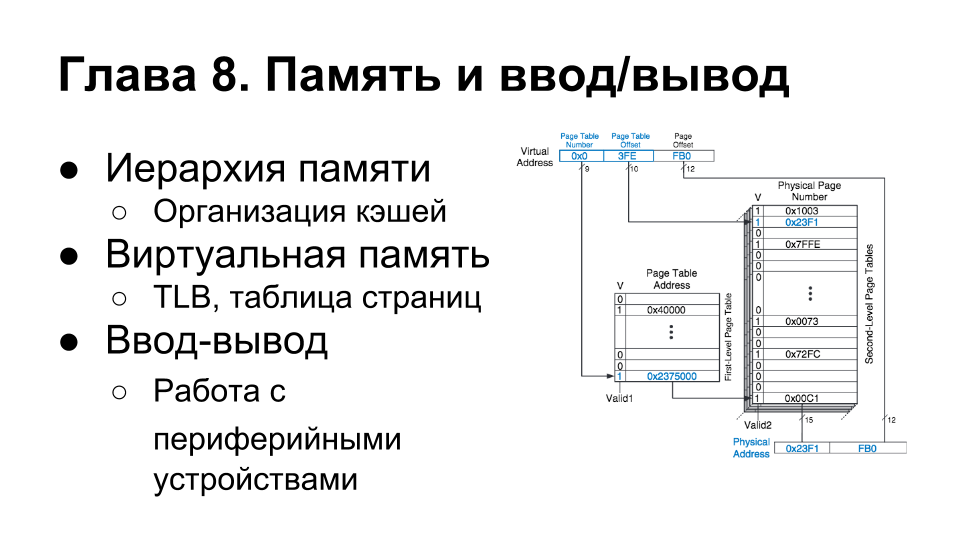
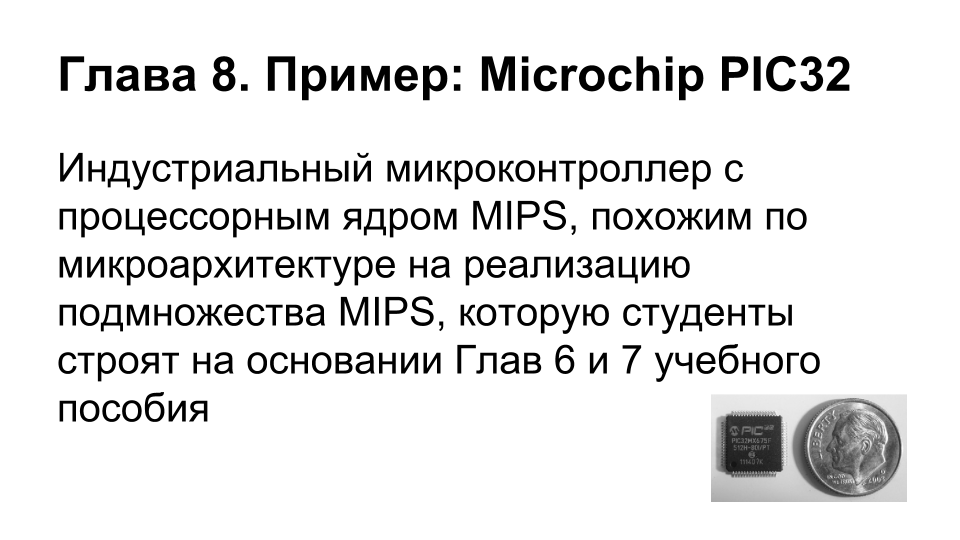

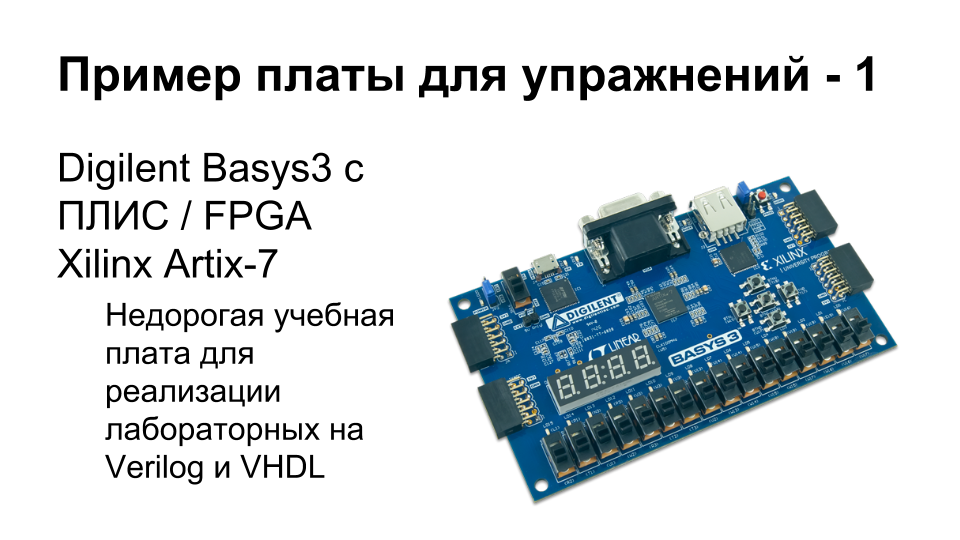


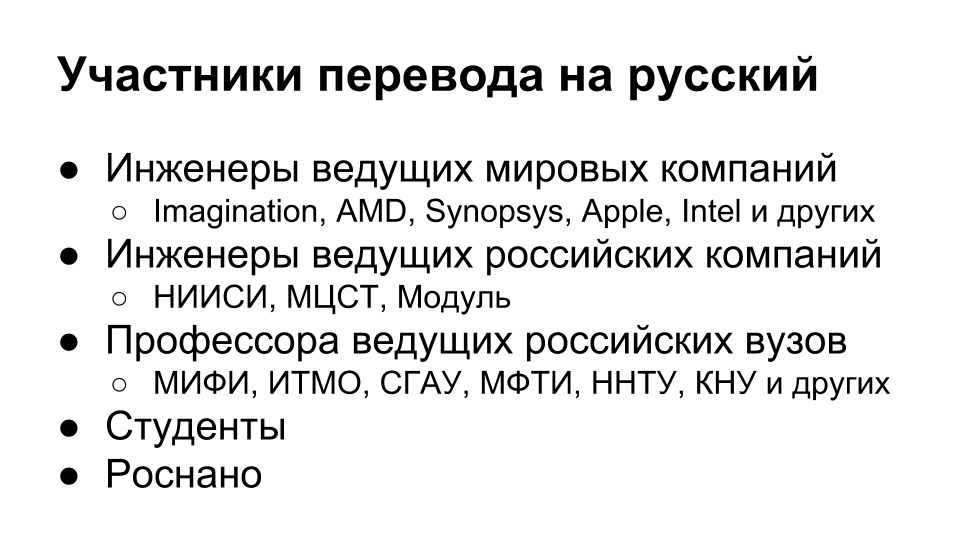
List of participants:

and the Fund for Infrastructure and Educational Programs of RUSNANO.
But drafts of a pair of clips that my colleagues from TraceAir and I started shooting to popularize the ideas of learning digital circuitry, computer architecture, Verilogu, SoC, etc. in Russia:
And now the final schedule of seminars in Almaty from August 22-26 , which are largely based on the materials of this textbook:
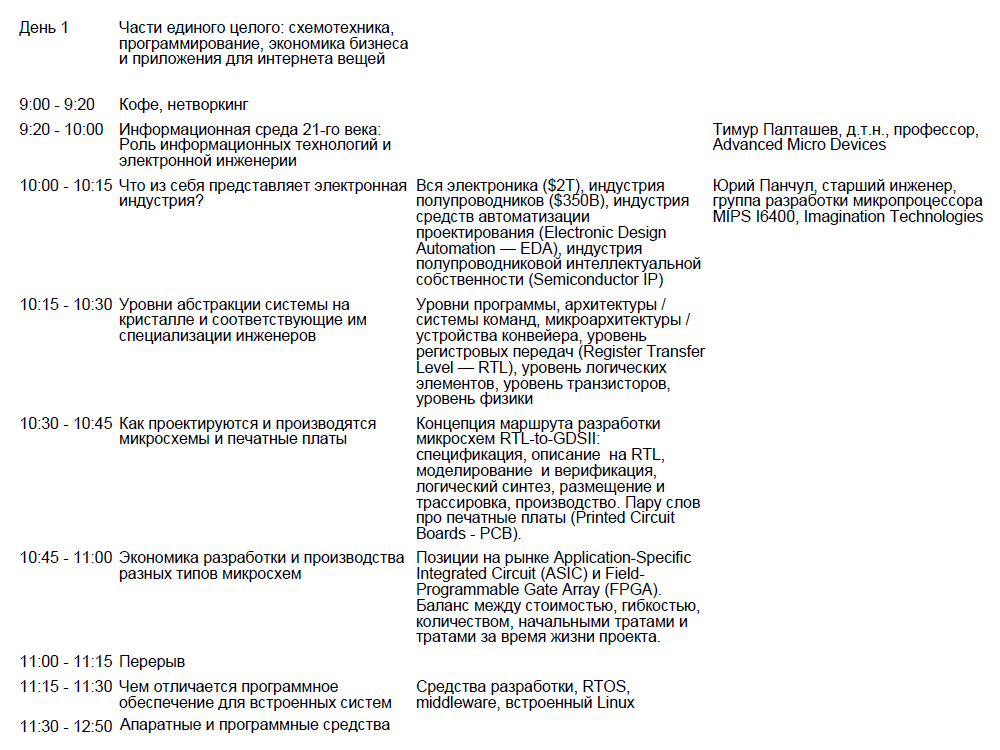

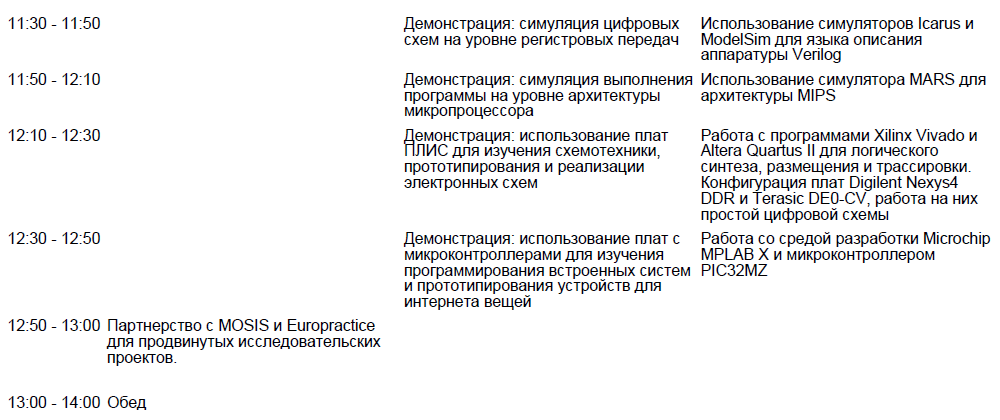

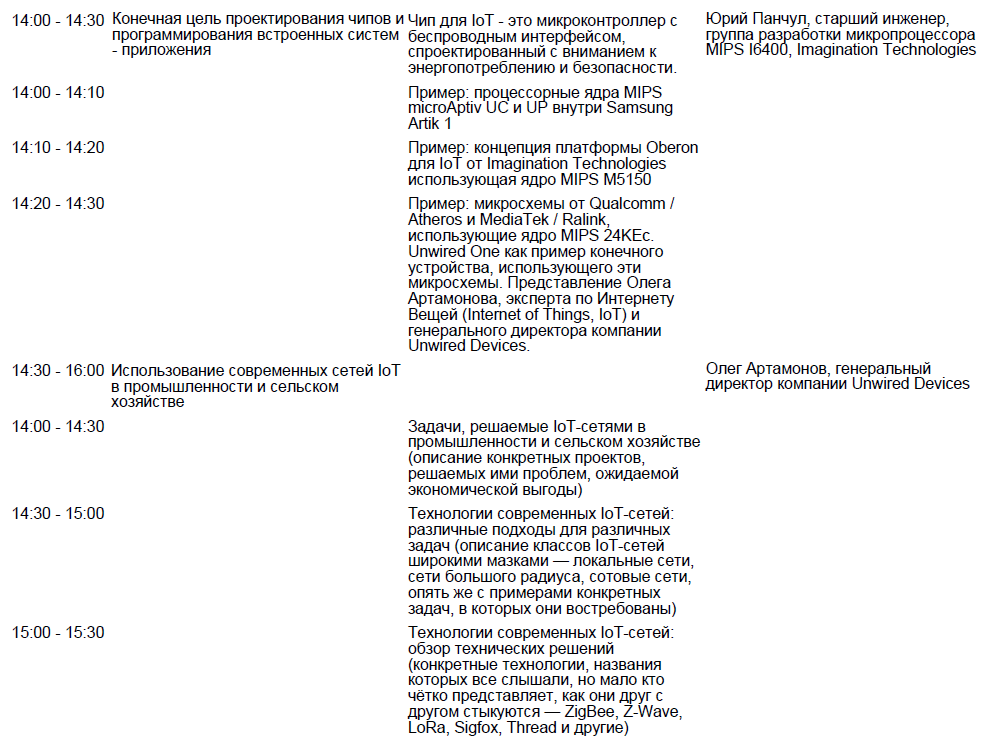





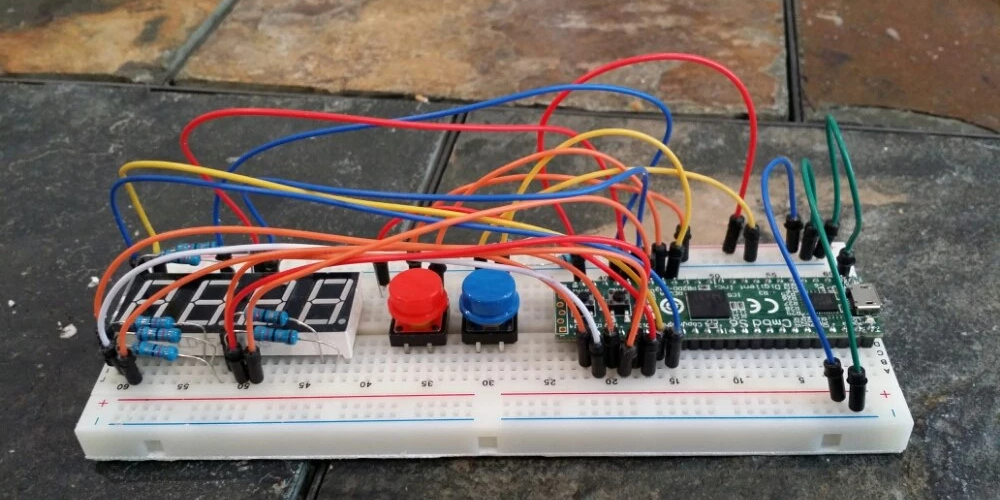
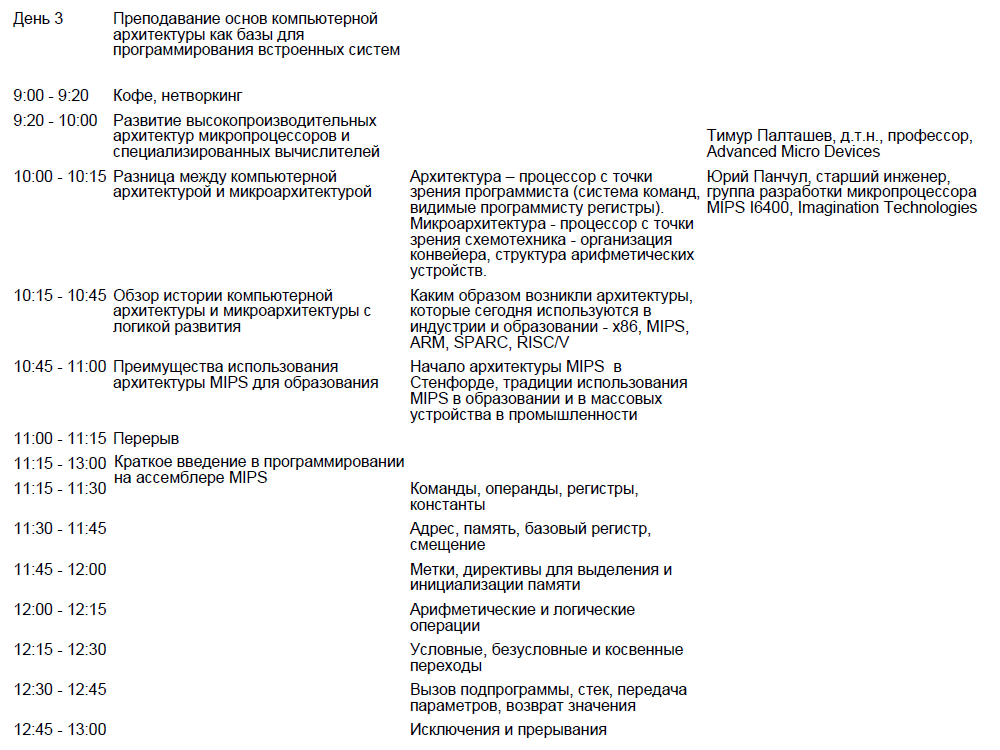
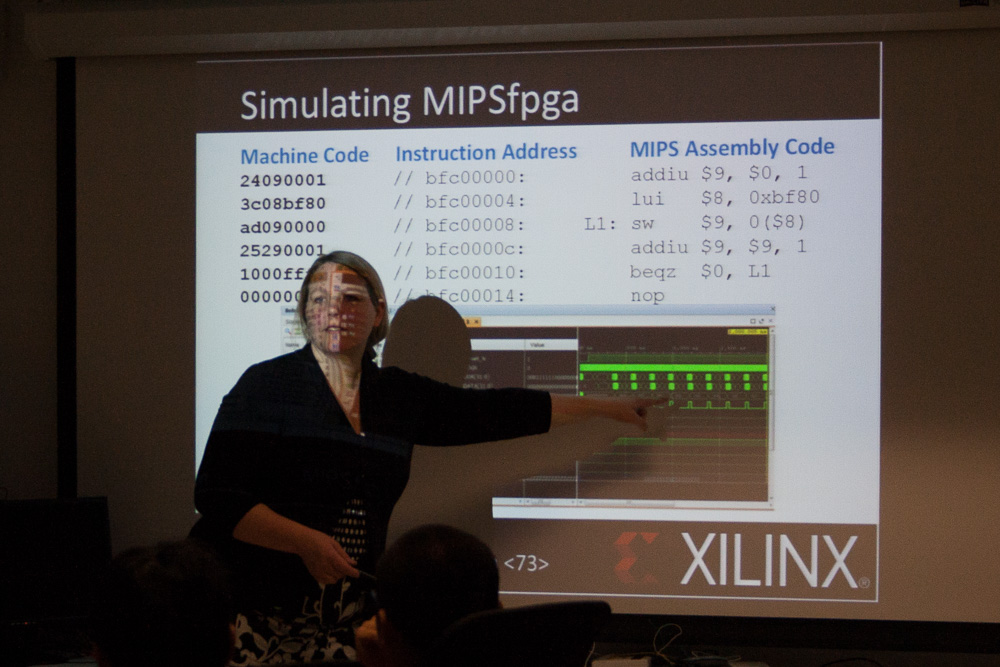
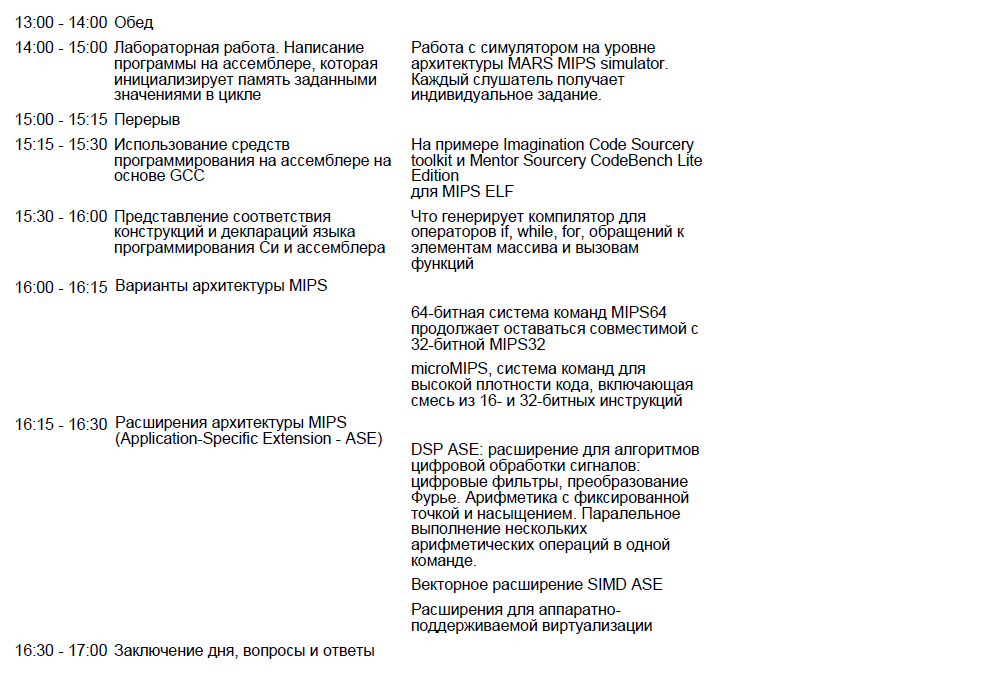

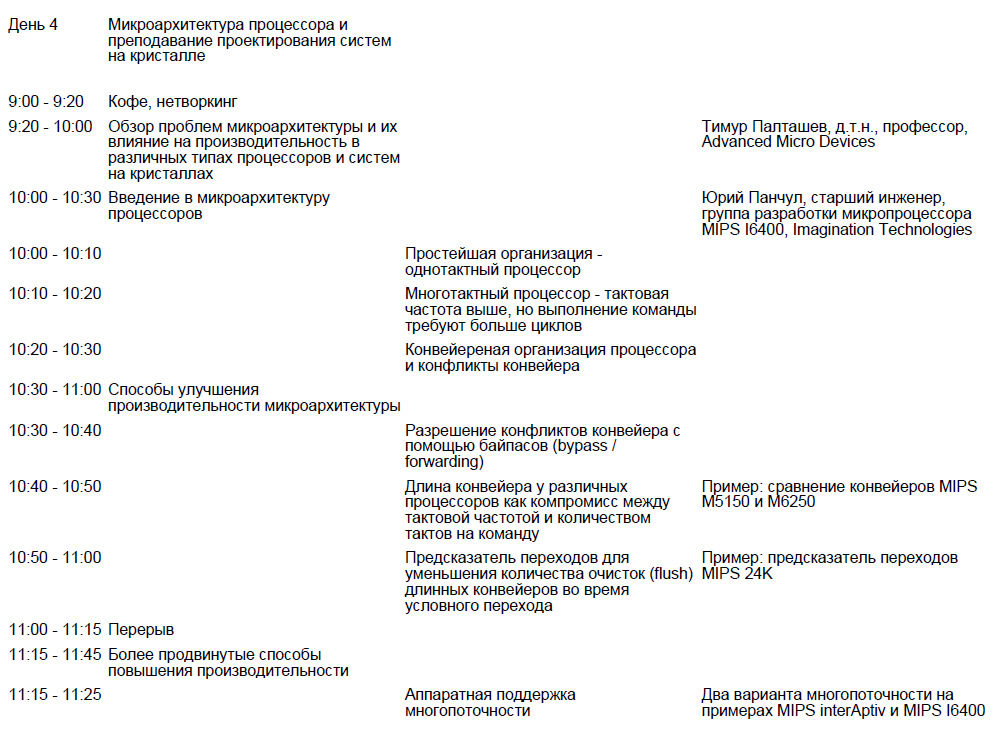
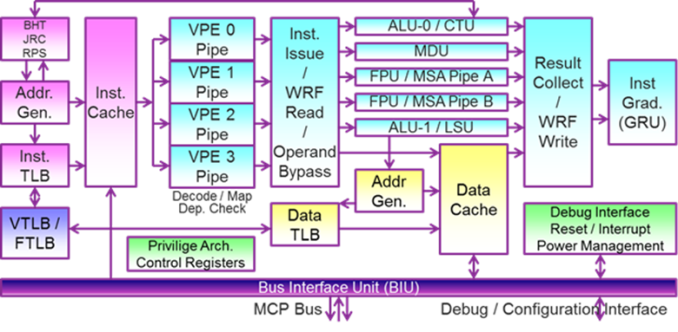

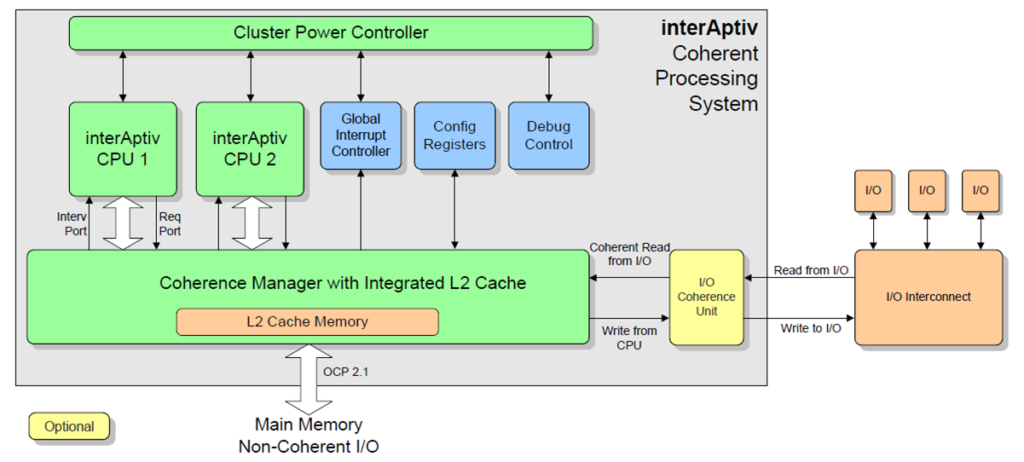
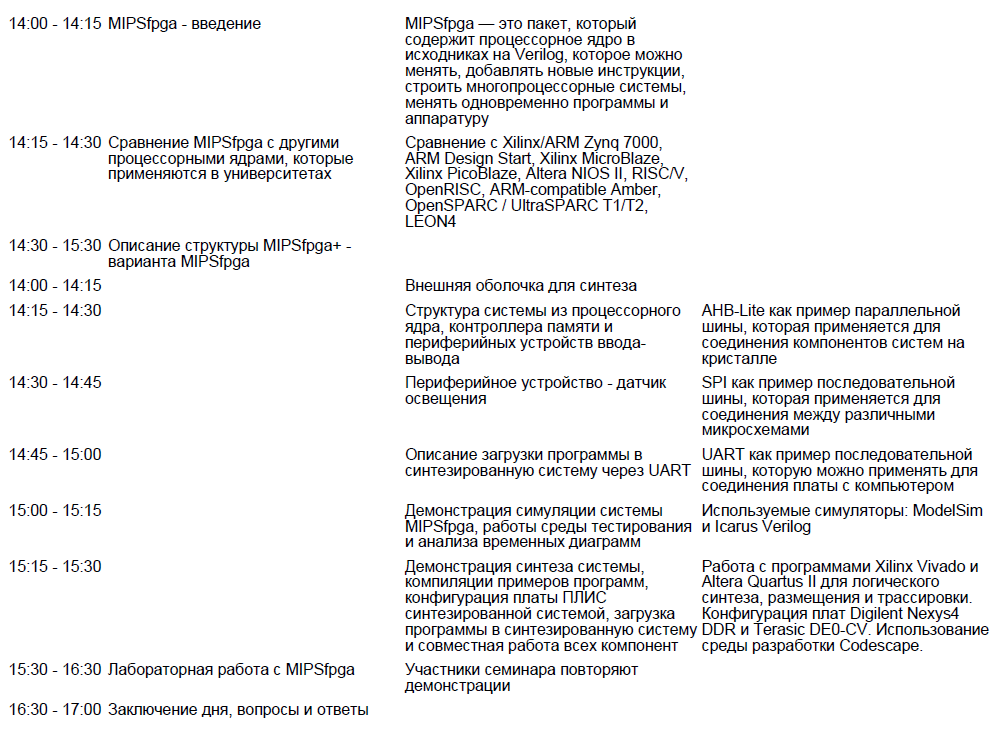
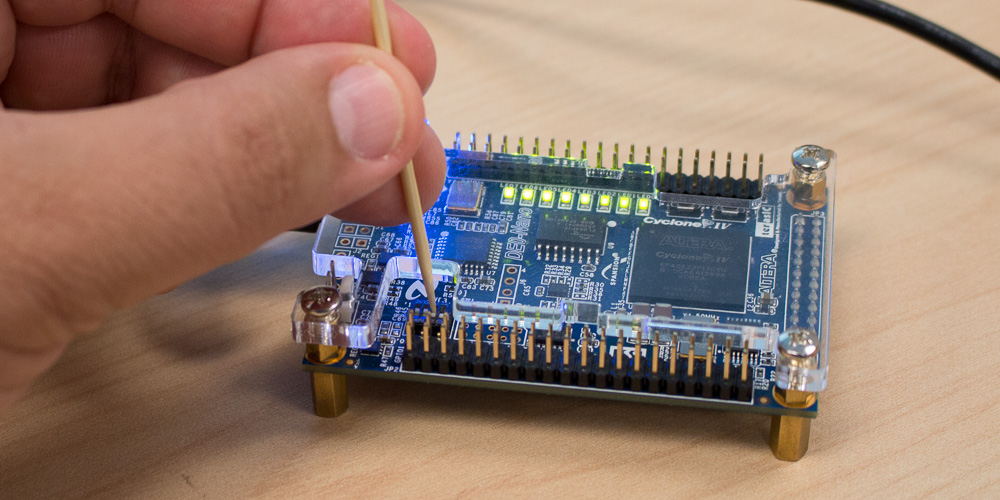

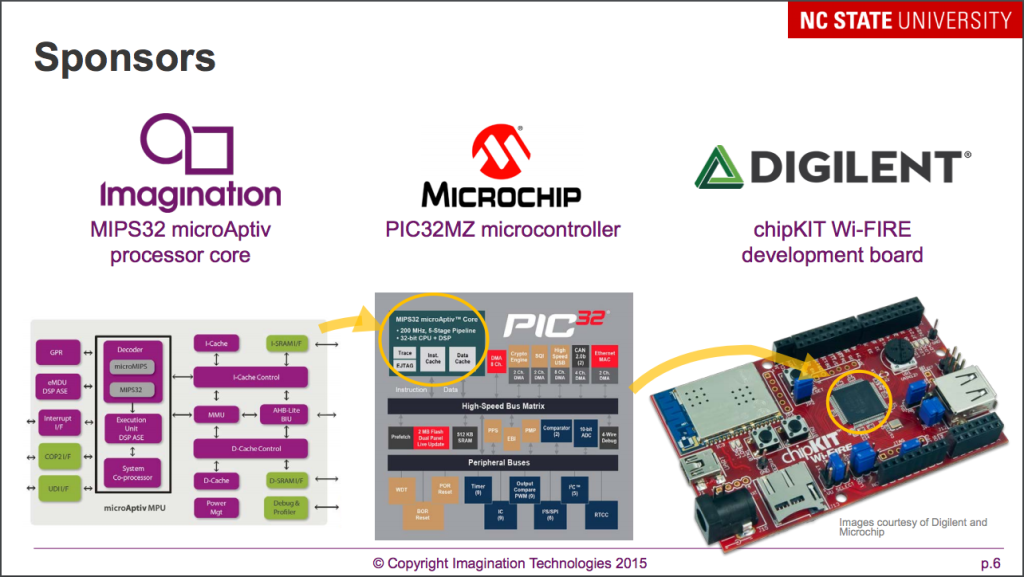
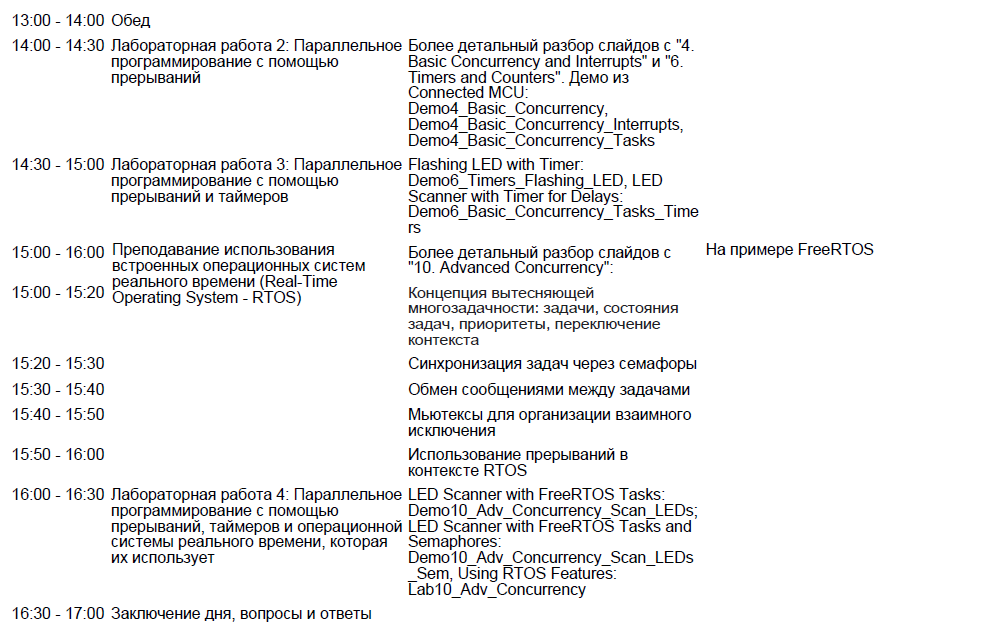

Thanks for attention!
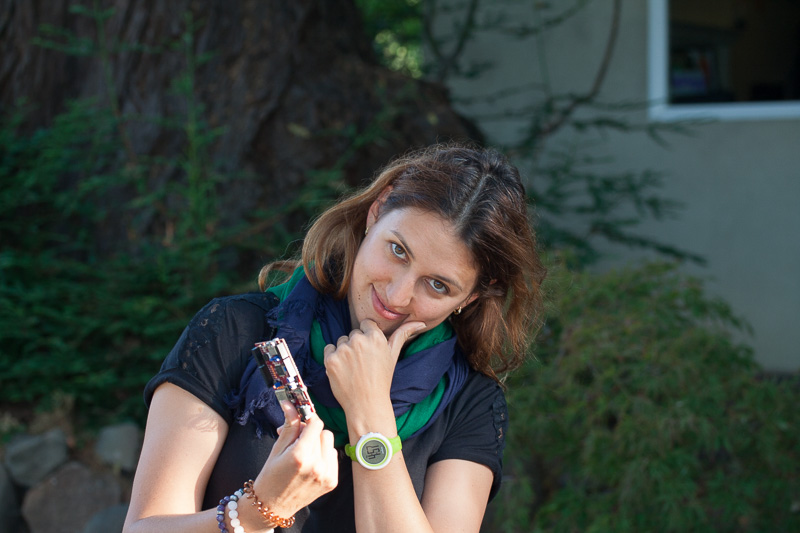

The book contains an “introduction to everything” available to a capable schoolchild or junior student who, after reading it, can design, write to SystemVerilog or VHDL and implement an uncomplicated but perfectly true conveyor processor on the FPGA. The book is written in a living language and uses concepts like the introduction of concepts such as finite automata:
')

Unfortunately, just like a year ago, the download of a book from imgtec.com was made by Krivoruk. You need to register twice - first as members of the Imagination Community, and then as members of the Imagination University Program. Fortunately, this year, double registration can be done on the same page - all you have to do is to answer “Yes” to the question “Do you also want to register for the Imagination University Program?” At the end - and fill in another opened sheet . In addition, after confirming the registration, you need to return (for example, by pressing "back and back" in the browser) to the page from which the file itself is downloaded. I think that after the closer integration of Europe with the countries of the Russian language, the quality of British websites will improve due to increased competition among web developers. But for now, alas, you will have to be patient and download a textbook like this:

Here is the link: http://community.imgtec.com/downloads/digital-design-and-computer-architecture-russian-edition-second-edition
It leads to this:
http://community.imgtec.com/register
After that, at the end there will be an unnoticeable question:

And when you click on the box, this form will open down:

If you forgot to click on the box, here is an alternative registration sequence:
1) register with the community community.imgtec.com/register
2) confirm email
3) login to the community
4) go to the imagination university program - community.imgtec.com/university/university-registration
5) go to the menu University | Join iup
6) fill in
7) go to community.imgtec.com/downloads/digital-design-and-computer-architecture-russian-edition-second-edition and finally download
Now about the content. I posted in this post slides about the content of the Harris-Harris textbook from the initial post a year ago, as well as the final schedule of seminars in Almaty from August 22-26 , which are largely based on the materials of this textbook. Colleagues from the educational community of Kazakhstan decided to improve the level of students' training in technologies related to the Internet of things, computer architecture, programming of embedded systems, the use of FPGAs and microcontrollers. The presentation of Harris & Harris, MIPSfpga materials and the Connected MCU course fit well into this agenda.
After Kazakhstan, my colleagues and I are planning seminars in Russia and Ukraine, both on the topics already mentioned (MIPSfpga, Connected MCU), and on the new Nanometer ASIC seminars on semiconductor manufacturing.
Slides about the content of the textbook from the initial post:




















List of participants:

and the Fund for Infrastructure and Educational Programs of RUSNANO.
But drafts of a pair of clips that my colleagues from TraceAir and I started shooting to popularize the ideas of learning digital circuitry, computer architecture, Verilogu, SoC, etc. in Russia:
And now the final schedule of seminars in Almaty from August 22-26 , which are largely based on the materials of this textbook:

























Thanks for attention!

Source: https://habr.com/ru/post/306982/
All Articles